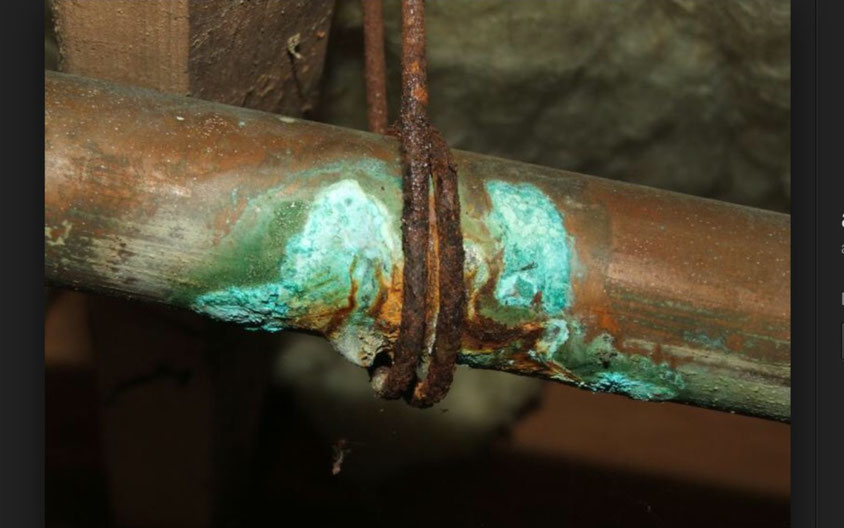Why are my Supply Pipes Corroded?
01 Mar 2019 - Post By Matt Walsh
Corrosion is “the deterioration of a substance or its properties due to a reaction to its environment”. In laments terms- the metal of the piping dissolves into the water as a result of various causes, causing pipe failure and corrosion of water heaters, appliances, and fixtures.
In Plumbing systems, corrosion is due to physical and chemical reactions between the pipe material and water.
Top 9 Causes of Copper Corrosion Problems
- Low pH (acid water less than 7.00
- High pH (alkaline water greater than 8.5)
- High levels of dissolved oxygen
- High levels of salts dissolved in the water (total dissolved solids)
- Corrosion-causing bacteria such as sulfates or iron bacteria
- Electrochemical causes, such as improper grounding of electrical appliances to the copper piping, and/or lightning strikes through utility poles grounding wires.
- High velocity of water, relative to size of piping, causing hydraulic wear on the piping, sometimes found in circulating hot water systems using pumps.
- Sand, sediment or other grit in the water causing wear on the piping
- Improper installation of copper piping by failure to properly deburr of ream the ends of pipe and/or use of excessive acid flux when soldering pipes.

First, I am sure you are asking what exactly is electrolysis in copper pipes?
HERE IS THE TECHNICAL DEFINITION:
Electrolysis is defined as “a method of using a direct electric current (DC) to drive an otherwise non-spontaneous chemical reaction. Electrolysis is commercially highly important as a stage in the separation of elements from naturally occurring sources”.
HOW DOES ELECTROLYSIS OCCUR?
Electrolysis can occur when a direct current electrical leak takes place underground, this type of leak is prone to attacking copper pipe. Electrolysis can also occur when two dissimilar metals come in contact with each other. For example, if you have had a repair on your main water line and the plumber used a new brass pipe to connect to the existing galvanized pipe, this may cause electrolysis resulting in a damaged water line.
High levels of chlorine and stagnant water are two causes of copper corrosion that can work together to accelerate deterioration. Stagnant water with low oxygen and high bacterial content is known to cause copper corrosion, and inactive plumbing systems are also vulnerable.
Some signs of electrolysis are an abnormal odor, green tinted staining on the pipe and corrosion which one may not become aware of as the piping is located below ground level.
HOW TO FIX THE PROBLEM
Plastic piping can be used to prevent electrolysis from occurring on your water line. The waterline will be inserted through a clear plastic pipe in addition to a special insulating wrap which will protect portions of the main that may still be exposed.
There are many potential factors which can affect supply piping. Understanding both the potential ongoing factors and determining if any singular events impacted or accelerated the damage to the piping is important to help resolve the issue in the long term.
As always, Twin Lights Home Inspection appreciates its clients! Our goal is to help educate you as home owners about your home to protect you investment.
Thanks for reading! -Matt
Twin Lights Home Inspection Serving Boston, and the North Shore of MA